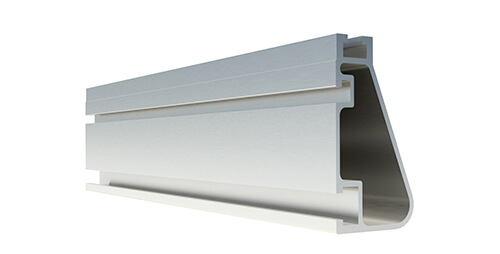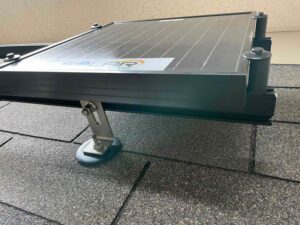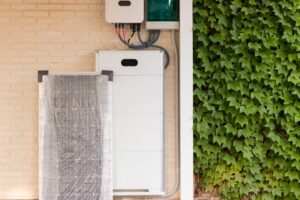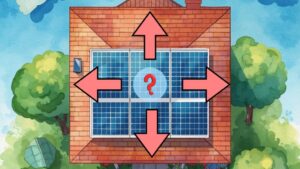Property owners rarely consider researching the quality of different mounting systems, but they play an important role in the longevity of their system. Using inferior products could cause failed inspections, leaks, production loss, or worse – fire hazards. When a property owner decides to go solar they not only purchase the solar panels and their inverters, they also purchase the mounting equipment needed to keep the panels on their roof (or other structure). For your standard asphalt shingle roof, this consists of flashing – leak preventative mounts secured to the roof, mounts, and wires secured within conduit to connect the system.
The actual mounts provide a multitude of benefits. Ever wonder why there’s a gap between the solar panels and the roof? The mounts create this gap to help provide cooling between the roof and the panel, which makes for a more efficient system. The installer can also adjust the angle of the panels for greater efficiency by adjusting the mounts. They also can help reduce the amount of screws needed in the roof. Lastly, some mounts can help make wire management easier and more organized. Mounts fall into two categories: rail mounts and rail-less mounts.
Rail Mounts
The rail mounts are considered the traditional form of solar panel mounting. They help the installer make any slight adjustments to the design layout while on the roof. They help installers utilize space and keep the layout looking sound without requiring much skill. However, the greatest advantage the rail system has over the rail-less comes down to wire management. Installers are able to zip tie wires to the rail, which extend the entire width of each row making it near impossible for wires to touch the roof or be exposed to direct sunlight when done properly.

Not sure what kind of mounting system was used for your system? Rails are difficult to see post-installation, but if you notice most of your panels are in portrait orientation then rail mounts were likely used. Systems that’re mostly landscape likely have rail-less mounts as that orientation is easier for mounting the panels.
Rail-Less Mounts
The rail-less system has become all the rage in 2024. Cheaper, lighter, and more versatile than their predecessor, no wonder more solar companies are choosing to befriend the cool kid on the block. Primarily larger, nationwide solar companies that need to find new ways to cut costs in the short-term find this mounting method appealing. However, without a convenient and long-term solution to wire management, this approach to mounting solar panel systems will face a nasty backlash felt years after the installation, and property owners will receive a bill on their doorstep or in this case, their rooftop.

{"question":"One benefit of a rail solar mount type is:","answers":[" a gap between the roof and panel for cooling","easier wire management","angling the panels to generate the most electricity","All choices are correct"],"correctAnswer":3,"bgColor":"#e5e5e5"}To understand the emergence and recent success of rail-less mounting systems, it’s important to look at where the solar industry currently stands. Solar companies across the US are trying to cut costs due to high interest rates and large dealer fees. Manufacturers within the industry have had to slice their prices considerably in order to help installers continue to buy from them and sell to property owners. In the process, more solar companies have been turning to rail-less system mounts as a way to cut costs and lower install times. Before I get too far into the subject, let’s first consider what rail-less wire management looks like.
Installers only have a short-term solution to wire management when using a rail-less system. The best solution is not zip ties, but metal clips that connect to the edge of the panel. These clips tend to fall off the panels during the installation process when the wires are tugged. This either makes for a huge headache to install properly because installers have to dig around underneath the panels to reclip them or not a headache at all because the installer doesn’t reclip them. If a system has wires touching the roof, it would immediately fail inspection. If you’re a property owner, a best case scenario for a failed inspection is a delay in your system producing electricity. Worse case scenario, you’ll need to hire a second solar installation company to fix the problems the original one created. When the electrical wire touches the roof and gets exposed to sunlight, the property owner will be lucky if the wires don’t fray after a year in the Texas heat.
Final Thoughts
The two types of mounts have similarities. Both help keep panels in alignment, fixed to the roof, and provide an air gap to keep the panels cool. While rail mounts are bigger and cost a bit more, rail-less mounts still lack the dependability needed for solar panel systems to be hassle-free for decades. So long as the new mount structure lacks a long-term wire management feature, rails will continue to be the way to go solar.






